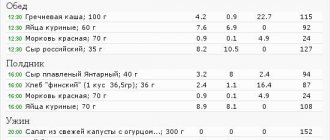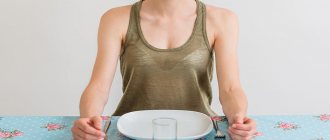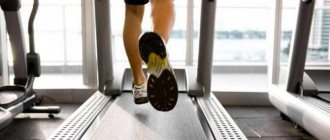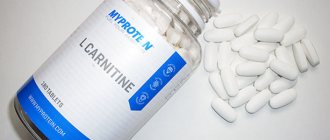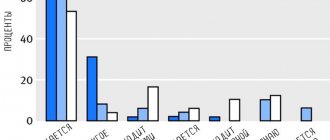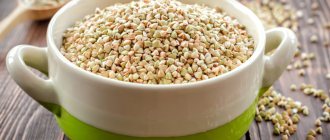- What you need to give up.
- Advantages.
Low-carbohydrate weight loss programs are extremely popular today among modern beauties, as well as athletes and men who have decided to get rid of extra pounds.
They belong to the category of gentle, most nutritious, and at the same time excellently “burning” fat deposits. The unique complex effect of proteins and fats has become the basis for the creation of various methods, among which the LCHF diet is especially popular.
Differences between the LCHF diet and the protein diet
In another way, the Low Carbs High Fat diet (LCHF) diet is called the keto diet. Just like the protein diet, this nutritional system completely excludes any carbohydrates, including complex ones, from the diet of a person losing weight. Thus, a person connects to a new nutrition system with an alternative source of energy, which are proteins and fats. At the same time, the strict LCHF diet does not limit the fat component in the diet, unlike protein. This makes it more comfortable and enjoyable to use, but relatively slow. In addition, such a nutritional system involves many more contraindications and is not suitable for everyone.
Nutrition rules
If you decide to create a LCHF diet menu yourself, then you should definitely know what proportions of products you will need to take. The entire daily diet should consist of 70 percent exclusively fat, with the remaining 30 percent coming from 20 percent protein and 10 percent complex carbohydrates. By receiving only such foods, the body is deprived of the usual sugars that are used to saturate the body with energy. This is how the breakdown of your own fat reserves gradually begins. This ultimately leads to weight loss.
In addition, the increase in the amount of fat in the diet is what, according to reviews, distinguishes the LCHF diet from other low-carbohydrate diets, since in them the amount of carbohydrates is usually reduced due to an increase in the proportion of proteins. However, even if the Dukan diet or the famous “Kremlin” diet help you lose weight, they can negatively affect your health. Scientists have found out that if most of the food entering the body is protein, then to obtain energy it will be necessary to take it from the breakdown products of proteins, which harms the condition of the kidneys and liver. This way you will actually be able to lose weight, but the weight will very quickly come back in even greater quantities.
How the keto diet works
The name of the diet, the effectiveness of which has been experimentally proven by Sam Klebanov, means “low carbohydrates, high fat.” It follows that the diet involves a significant reduction in all types of carbohydrates. Thus, the menu does not include traditionally dietary rice, various cereals and breads, as well as sweets, most fruits, baked goods and confectionery. The principle of operation of the high-fat LCHF diet is that the body stops receiving energy from the simplest sources - carbohydrates, and instead its vital functions are provided by healthy fats . Weight loss is achieved through the following mechanisms of the keto diet:
- Biochemical processes of fats. On the one hand, one gram of carbohydrates provides 4 kilocalories of energy to the body, and fat – 9 kilocalories. This means that fats are much more energy-dense and calorie-dense. However, the body spends more energy on their processing. In addition, excess calories received from carbohydrates are immediately formed in the form of subcutaneous fatty tissue, but this is not typical for dietary lipids.
- No feeling of hunger. Dietary lipids saturate the body much faster and more, so those who are losing weight practically do not feel hungry, and their appetite decreases. As a result, he gets by with a smaller portion and feels as comfortable as possible.
- Decreased insulin levels. According to research into the effect of glucose on the human body, increased levels of insulin in the blood can interfere with comfortable weight loss. When the body receives a lot of carbohydrates, this problem becomes relevant. In addition, sudden surges in blood sugar cause instability of appetite, which can also interfere with your weight loss program. With the keto diet, insulin remains at a stable level and does not cause side problems.
- Physical exercise. Most fasting diets do not allow you to use exercise for weight loss. However, the LCHF diet allows those losing weight to get enough energy for physical activity without fatigue or loss of strength.
- Shaping the silhouette. Starvation carbohydrate and classic diets help you lose weight, but do not speed up the fat burning process. This way you can lose weight, but not gain muscle definition. The absence of carbohydrates in the diet helps to get rid of the subcutaneous fat layer, and the presence of physical activity will strengthen muscle tissue and give it a beautiful shape.
Look at the same topic: Beneficial properties of kefir with flaxseed
Thus, the keto diet is an excellent alternative to all popular nutritional systems that require low calorie content and the presence of carbohydrate foods in the diet.
General rules
Low-carbohydrate nutrition is represented by a wide range of low-carbohydrate diets, ranging from classic diets with a slight restriction of the carbohydrate component to the Keto diet , in which the traditional biochemical processes of providing the body with energy are excluded and an alternative mechanism for obtaining energy is launched.
One of the varieties of this type of diet is a high-fat, low-carbohydrate diet, the so-called low carb/high fat (LCHF diet), which translates as “low carbohydrates/high fat.” As you know, with normal nutrition, the main source of energy is carbohydrates ( glucose ), which generate energy through the process of metabolism ( glycolysis ). At the same time, nature also provides other metabolic mechanisms for energy production:
- gluconeogenesis - obtaining energy through the utilization of proteins;
- ketogenesis is the production of energy from adipose tissue, which during metabolism breaks down into ketone bodies.
With sufficient consumption of carbohydrates, the process of glycolysis occurs. At the same time, the level of insulin , which triggers the process of glycolysis. The resulting glucose is partially used for:
- energy supply to the body;
- deposited in the liver/muscles in the form of glycogen ;
- turns into fat and is deposited in the body (with excess glucose intake).
insulin is produced , which blocks a metabolic pathway for energy production such as ketogenesis ( lipolysis ). The diet of the vast majority of people in the modern world contains large amounts of starches and sugars. Essentially, the metabolism on this diet functions by producing increased levels of insulin and occurs outside of the process of ketosis , which is regarded as a potentially dangerous condition, accompanied by increased stress on the liver and contributing to the loss of muscle tissue.
However, this is not entirely true; the main danger is the process of “acidification” of the blood, which occurs in a number of diseases/conditions, in particular diabetes , fasting - the formation in large quantities of ketone bodies consisting of acetoacetic / hydroxybutyric acids / acetone , which are transported from the liver to peripheral tissues. But due to their high concentration in the incoming blood, the muscles/organs cannot cope with their oxidation, which leads to the development of ketonemia . Unlike “malignant”, benign dietary ketosis occurs against the background of normal insulin levels without symptoms of intoxication of the body.
Thus, the main goal of a high-fat diet is to achieve a state of dietary ketosis/lipolysis, in which the body begins to use its own stored fats to meet energy needs. In fact, the phenomenon of ketosis should be considered as a tool for transferring the body to the process of burning fats, which first break down into glycerol and free fatty acids, which continue, accordingly, to break down into so-called “ketone bodies” with the formation of a new fatty acid, which is used as fuel. Ketones are excreted from the body through the respiratory tract and urine.
The downside of a low-carb diet is the potentially high risk of muscle loss due to protein breakdown and cortisol- . This process is prevented by growth hormone, which counteracts cortisol, activating the process of penetration of amino acids into the muscles. You can also paralyze the effects of cortisol by eating more protein. In this case, the protein supplied with food will be used to obtain energy, and muscle protein will not be involved in the process.
According to scientific research, for this you need to get 2.5-3.0 protein/1 kg of body weight. But a more correct approach to the amount of protein consumed is the level of physical activity. That is, if you need to speed up fat burning and at the same time increase muscle mass, the protein content in the diet should be on average 3 g/kg of weight, and if there is no goal to build muscle, with standard physical activity, the protein component in the diet should be within the physiological range norms.
Thus, the diet should be high in fat, physiologically sufficient in protein and very low in carbohydrates (20-50 g/day). It is also important to constantly monitor the total carbohydrate content, especially the so-called “hidden” carbohydrates, and maintain a high level of fat in the diet so as not to leave the ketosis process. To do this, the level of carbohydrate content should not exceed an average of 50 g/day. Many people do not understand the difference between ketogenic diets and a standard low-carbohydrate diet with carbohydrate restriction in the diet at the level of 150-200 g/day, in which the process of ketosis does not start.
That is, the compositions of the main dietary macronutrients in traditional low-carbohydrate diets do not meet the requirements of ketogenic diets. Ideally, when trying to lose weight, it is advisable not to leave ketogenesis before reaching the target level, since this state is quite comfortable for losing weight and, moreover, there is no need to re-activate this mechanism. It should be remembered that stopping ketogenesis is quite simple, even without knowing it. Therefore, remember that even a small intake of an unexpected additional amount of carbohydrates (a bun, a bagel) will take your body out of ketosis and the process will have to be restarted. Signs of the body’s transition to ketogenesis are:
- decreased appetite;
- the appearance of ketones in the urine (test with special strips);
- the appearance of the smell of acetone from the mouth, sweat, urine;
- improved mood, increased energy, increased strength/vigor.
Classic low-carbohydrate diets (low-fat/low-calorie), unlike keto diets, are accompanied throughout their entire duration by lethargy, weakness, a feeling of constant hunger, and decreased performance. At the same time, average fat burning, low insulin , and loss of muscle mass are observed.
Many may wonder if there are differences between the keto diet and the LCHF diet, and if so, what are they? There is no fundamental difference. Each of them is based on the process of ketosis, but the LCHF diet is a milder nutritional option. Now let's look at the LCHF diet in more detail.
The approximate standard for the content of basic food nutrients in the diet is 20% proteins, 70-75% fats and 5-10% carbohydrates. With a strict version of the LCHF diet, carbohydrate intake is limited to 10-20 g/day, with a more liberal version - 50 g. At the same time, the ratio of proteins and fats in the first days of the diet should be 1:1, and only after the body passes through the “metabolic threshold” the level of fat in the diet increases to 70-75%.
The question of the total calorie content of the daily diet is also of some interest, since most people assume that if there are no strict restrictions on protein and fatty foods, then they can be consumed in any quantity. This is not entirely correct, since the overall energy value of the diet is of primary importance, but it all depends on the task at hand.
If your goal is simply to lose weight, then it is recommended to reduce the caloric content of your daily diet by 500-600 kcal from the norm. If your goal is to gain muscle mass while burning fat, then the calorie content of your diet increases by 500-600 Kcal. These indicators can vary significantly depending on the level of metabolism/energy consumption of the body.
The positive aspects of the LCHF diet when trying to lose weight are:
- Body weight is lost due to adipose tissue.
- Weight loss is accompanied by a general improvement of the body, due to the stimulation of CMA autophagy - a cellular process of removing organelles, proteins and foreign bodies from the aqueous component of the cell ( cytosol ) and transporting them to lysosomes for disposal. In addition, against the background of low-carbohydrate ketogenic diets, metabolic effects such as a decrease in blood glucose levels, excretion of ketone bodies in the urine, normalization of insulin levels/lipid profile, and normalization of blood pressure .
- Weight loss occurs without the feeling of hunger and in a state of psychological comfort.
When building an LCHF diet, carbohydrates are primarily limited. Sugars and their artificial substitutes, sweets, sweet juices, cakes, chocolate, buns, cakes, pastries, honey, jam, ice cream, jam, honey, sauces with added sugar, sweet juices, curds, jelly/compotes, sweet yoghurts are excluded.
The list of prohibited products includes products containing starch (pasta, bread - black/white, cereals, chips, rice, muesli and all whole grain products - bread, sunflower seeds), legumes.
Sweet fruits, dried fruits and all root vegetables (beets, carrots, celery root, potatoes) containing a lot of starch and sugars, alcoholic beverages, especially beer, kvass, sweet/semi-sweet wines are excluded.
Above-ground vegetables (eggplant, cucumbers, tomatoes, onions, all types of cabbage, zucchini/zucchini, leafy greens) may be present in the diet as a carbohydrate component. Unsweetened fruits/berries and nuts (cashews, walnuts, flaxseed, sesame) are allowed in minimal quantities.
It is recommended to exclude trans fats from the fat part of the diet (spreads with trans fats, margarine); if lactose is intolerant, use whole/skimmed milk. Protein products and fatty foods are allowed - concentrated fatty broths, fatty meats/sea and river fish (cod, salmon, salmon, herring), meat products (bacon, boiled pork, balyk, sausages), fatty poultry meat (goose, duck), butter/vegetable oil, high-fat dairy/fermented milk products, sauces/homemade mayonnaise, fatty hard/soft cheeses, eggs, mushrooms, seafood (shrimp, squid), bran.
It is recommended to use animal proteins as the protein component. It is extremely important to control the amount of free fluid consumed, the volume of which should be at least 3.0 l/day at the rate of 40 ml/1 kg of weight. The salt content and the limitation of various types of pickles are also slightly limited. Diet: at least 5 times a day with an interval between meals of no more than 3-4 hours. The last meal is 3-3.5 hours before bedtime.
Rules for maintaining the LCHF diet
The basic rule of maintaining a keto diet is to significantly limit carbohydrates in your daily diet. In addition, those losing weight should adhere to the following recommendations:
- Avoid fasting and exhausting and long-term training (it is recommended to do them up to three times a week);
- Completely eliminate simple carbohydrates from your diet;
- It is allowed to use only natural vegetable and animal fats in the menu (trans fats, heavy oils, margarine should also be completely excluded);
- Even with the addition of fat, dishes should be prepared correctly (it is not recommended to fry foods with a large amount of oils, etc.);
- All food on the menu must contain sufficient amounts of vitamins and mineral components;
- Fiber should be present in the daily diet as a means of preventing constipation, intoxication and digestive disorders (bran, flaxseed, and low-carbohydrate vegetables are allowed as fiber);
- The minimum duration of daily sleep is 7-8 hours;
- It is important to avoid stressful situations, since in this case there may be active production of cortisol, which interferes with weight loss processes;
- Compliance with the classic drinking regimen will help maintain good health, prevent intoxication and speed up the process of losing weight;
- To maintain the strength and quality of muscle tissue, a sufficient amount of protein must be present in the diet.
In many ways, the LCHF diet without hunger is a revolution in food and dietetics, since it does not require exhausting exercise and fasting. On the other hand, you cannot neglect the rules and recommendations of the course and stick to a diet for too long, since this can significantly undermine the health of the person losing weight.
Nutritionist opinion
The process of the body's transition from standard energy production (through the processing of glucose) to an alternative one (glycolysis - ketogenesis) does not always occur smoothly. According to nutritionists, the following signs may be negative side effects from such a transition to LCHF:
- disruption of the gastrointestinal tract;
- heaviness and bloating in the abdomen;
- constipation or diarrhea;
- fatigue and frequent weakness;
- headache and insomnia;
- thirst.
Physical activity and the minimum amount of carbohydrates will help you overcome this period. It is very important to drink enough water for proper bowel function, since dysbiosis may develop during the transition to food restriction. Therefore, nutritionists recommend increasing the amount of cabbage and unsweetened apples you consume.
In addition, to avoid negative consequences, preparations containing fiber (not bran) are suitable. They also need to be taken with plenty of water.
Nutritionists remind us that in the process of losing weight it is important to fill your diet with vitamins and minerals in tablet form.
https://youtu.be/2HriE8i_HsA
Products on the LCHF diet
When creating a menu, you must adhere not only to the basic rules and recommendations, but also to the list of permitted products. These include:
- Meat and fish products (low-fat and fatty varieties);
- Seafood;
- Various sauces that exclude trans fats and heavy oils;
- Fatty dairy and fermented milk products, including sour cream, fermented baked milk, yoghurts without sweet fillings, cream;
- Sweeteners without carbohydrates and calories (it is best to use only natural ones: stevia, sucralose);
- Nuts and seeds (any low carb variety);
- Greens and vegetables (cabbage, spinach, asparagus, mushrooms, zucchini, cucumbers, tomatoes);
- Mushrooms;
- Vegetable oils, butter;
- Eggs;
- Fruits (avocado only);
- Pasta (Shirataki spaghetti only);
- Soft and hard cheeses of any fat content;
- Meat, vegetable and fish broths;
- Olives and olives;
- Lard (in limited quantities);
- Low sugar berries.
Foods prohibited on the keto diet include:
- Sugar and honey in any quantity;
- Carbonated drinks (with the exception of mineral water, it is allowed to periodically consume drinks marked “Light” without sugar);
- Any cereals in any form;
- Bread and bakery products;
- Confectionery, baked goods, sweets;
- Corn and grain flakes, breakfast cereals, muesli;
- Sweet yoghurts, curds, snowballs and other fermented milk products with carbohydrate fillers.
A menu of the proposed permitted foods on the LCHF diet allows you to quickly lose weight, but they should be combined correctly. The daily diet should be varied and relatively balanced. Eating exclusively fatty and monotonous foods can cause health problems. In strictly limited quantities, it is allowed to consume unsweetened fruits, dark chocolate with at least 70% cocoa, tea and coffee, pickled vegetables and flour dishes made from low-carbohydrate flour.
Meat
Suitable meat for LCHF is moderately fatty and not seasoned with color fixatives or excess antibiotics. It is impossible to know how many antibiotics there actually are in meat without an independent laboratory, but you can check the composition. Always read the ingredients of the minced meat.
There is debate about the benefits of grass-fed, but if the animal is fed predominantly grain, the meat definitely contains pro-inflammatory Omega 6 fats. If you eat such meat often, then the balance of Omega fats will tilt in the inflammatory direction.
If little is known about the quality and origin of meat, then it is safer to take lean cuts and add fat during cooking in the form of oil. Animal fat absorbs harmful substances - pesticides and other persistent organic pollutants, protecting the body from their effects.
Toxicological Function of Adipose Tissue: Focus on Persistent Organic Pollutants
Take raw bacon; raw smoked bacon contains sugar, dyes and other ingredients that require the help of Google. The same goes for semi-finished products like sausage.
There is sugar, no carbohydrates.
Sample daily menu for the LCHF diet
The daily menu, which will be offered below, should not be considered as the only correct nutrition option. Products in it are allowed to be replaced or excluded, or swapped. It is recommended to increase the number of meals to five to six. Portions should be about 150-200 grams.
See this same topic: What diet should you be on to lose weight during pregnancy?
A sample menu for the day might look like this:
- An omelette made from two egg whites with cheese and bacon. Coffee with cream and a couple of slices of cheese.
- A cup of cottage cheese with berries, tea.
- Vegetable soup made from chicken broth. Vegetable salad with vegetable oil and seeds.
- A couple of slices of cheese, chopped tomato with sour cream.
- Vegetable stew in vegetable oil. Liver stewed in creamy sauce.
This menu contains the required amount of proteins a person needs for the day, as well as a sufficient amount of fiber and fat.
Another menu option
In the future, you can use a more strict LCHF diet, which significantly reduces the amount of carbohydrates allowed. The diet in this case will be as follows:
- On Monday, you can serve a fresh salad for breakfast, consisting of various greens, tomatoes and cucumbers. It is usually served with an omelet. As a snack, you can drink a glass of kefir and eat a few walnuts. For lunch, it is recommended to grill yourself a delicious piece of pork, and add a green salad with celery and suluguni cheese as a side dish. For dinner, the best choice is beef cooked in sour cream sauce with a salad of white cabbage and cucumbers.
- On Tuesday, make yourself a portion of cutlets for breakfast, but steam them. They would be complemented by a salad of green onions, celery and tomatoes, sprinkled with nuts for texture. For a snack, drink a glass of natural full-fat yogurt. For lunch you can eat fried chicken with squash caviar, but for dinner it is recommended to bake duck breast in a sleeve with various vegetables and barbecue sauce to add an original taste and aroma.
- Wednesday morning will begin with a delicious omelet with slices of ham, as well as a salad of tomatoes and cucumbers. During your break, treat yourself to a cheese muffin with sun-dried tomatoes and a glass of kefir. For lunch, pureed zucchini soup and pancakes made from them, for example, with sour cream, are suitable. For dinner, serve pork steak with coleslaw.
- On Thursday, breakfast should consist of dried meat with a piece of hard cheese and fried bacon. During a snack, you should eat some peanuts and drink a glass of kefir. Keep lunch as light as possible by simply grilling vegetables and steaming chicken cutlets. You can have dinner with the leftover pork steak from yesterday, and add a cheesecake and a glass of herbal tea to it.
- On Friday, for breakfast you should serve pancakes made from zucchini and a couple of boiled eggs. For lunch, you can grill meat, and as a side dish make a fresh salad of onions, bell peppers and tomatoes. Pumpkin puree is great as a snack. For dinner, you can eat a selection of suluguni, dried meat, bacon and smoked cheese.
- On your first day off for breakfast, you can treat yourself to a salad of white cabbage, cucumbers and herbs, as well as an omelette with ham and cheese. For lunch you can serve a delicious stew with stewed rabbit and vegetables. But for dinner, grill eggplants and mushrooms, and add baked chicken wings for protein.
- On the last day, have breakfast with pureed zucchini soup, and after a while, eat several zucchini pancakes with sour cream as a snack. You can have lunch with a pork cutlet with a light salad of herbs, tomatoes, celery and nuts. For dinner, a cheese plate with fried bacon is served, as well as kefir with nuts.
Contraindications and restrictions for losing weight
The LCHF diet is suitable only for healthy people without any abnormalities in the functioning of internal organs or exacerbation of chronic diseases. The main restrictions on the course include:
- Kidney pathologies;
- Disorders of the cardiovascular system;
- Diseases of veins and blood vessels (varicose veins, thrombosis);
- Pregnancy and breastfeeding period;
- Chronic constipation;
- Diseases of the liver and gall bladder;
- Inflammatory diseases of the gastrointestinal tract (ulcers, gastritis, cholecystitis, pancreatitis);
- Persistent dysfunction of the digestive system.
The keto diet is not recommended for older adults because it involves eating large amounts of heavy food. The diet contains a significant amount of cholesterol, so there is a high risk of developing thrombosis and other damage to the veins.
Side effects
The diet significantly limits the balance in the diet, and therefore sometimes causes unpleasant side effects. However, most often they occur in cases of violation of the regime and recommendations. In such situations it is likely:
- Persistent constipation, disruption of the digestive system;
- An increase in blood cholesterol levels (this indicator should be systematically checked throughout the course);
- Dehydration of the body (it is important to maintain a drinking regime to prevent the problem);
- Vitamin deficiency, lack of minerals;
- Ketoacidosis;
- Osteoporosis (especially with too much fermented milk and dairy products in the diet);
- Menstrual irregularities and gynecological problems (in women).
Look at the same topic: A unique method of losing weight, the “Coffee with Butter” diet
In rare cases, the formation of kidney stones and progression of cholelithiasis is possible. In the presence of chronic pathologies of any organs and systems of the body, symptoms of exacerbation may occur.
Before starting a diet, it is important to undergo a comprehensive medical examination to determine the presence of contraindications. If side effects occur, the keto diet should be stopped and the principles of proper healthy eating should be switched to.
Dairy
Butter - normal fat content 82.5% or melted butter - everything except fat has been rendered from it. Look at the ingredients - creamy and vegetable will not work.
Sour cream, cream - the fattier the better. Here you also need to check the composition - heavy cream for sauces contains starch. It is also found in sour cream from unscrupulous producers, but they usually don’t write about it, nothing can be done about it.
The packaging does not indicate in any way that this is “buttercream” and not cream.
Cheeses are of normal fat content; for soft ones, check the composition for starch and sugar.
Advantages and disadvantages of the LCHF diet
Despite all the benefits of the LCHF diet for weight loss, it has both advantages and disadvantages over other nutrition systems. The positive properties of the course include:
- Rapid weight loss by reducing body fat;
- Possibility of gaining muscle mass while losing weight;
- No feeling of hunger throughout the course;
- A varied menu and the ability to independently select your diet depending on your taste preferences;
- Psychological comfort and the absence of side effects in the form of chronic fatigue and bad mood, characteristic of low-calorie diets.
Disadvantages of the diet:
- High risk of problems with the cardiovascular system with long-term use of the diet due to increased cholesterol levels;
- Heavy foods included in the LCHF diet can cause discomfort in the stomach and pancreas;
- Possibility of causing significant harm to health if the course is not followed correctly.
The diet can be considered relatively safe. However, before using it, you should consult your doctor.

